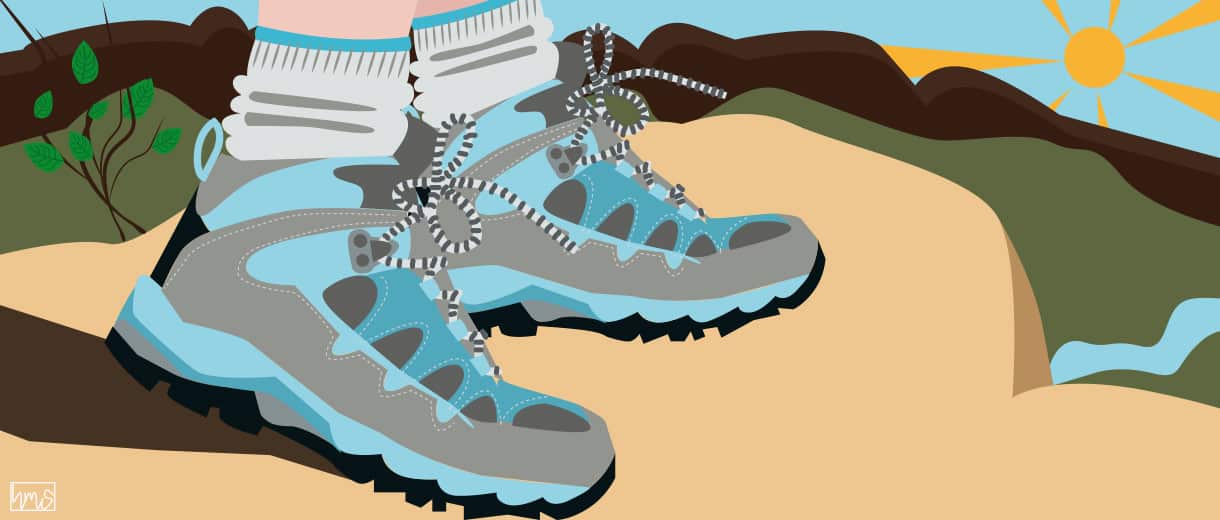Trekking Boots: How To Choose The Right Ones
With hectic lifestyles that see us rarely alone, escaping to the wilderness can restore calm and build resilience providing a number of health benefits ranging from physical to mental to spiritual. As neuroscientist Daniel Levitin explains in his book, Successful Aging, “hiking exercises the part of your brain designed to help you navigate through life—for example, the retrosplenial cortex and the hippocampus, which aids in memory, too—which is why hiking not only helps your heart but helps your mind stay sharp, as well”.
However, before embarking on your expedition, the first thing you need to really enjoy the outdoors in all weathers is a good trekking boot. But how can we find the right pair of shoes? In general, the key features to look out for are good waterproofing, good breathability and good grip.
How to check the correct fit
It’s not just about having the latest super-technical hiking boots, though. As we age, our feet might change in shape and size through the years: they become wider, longer, and flatter as the ligaments and tendons lose strength and elasticity. You may also experience foot and ankle swelling due to problems of circulation. The right fit is essential, as well as the overall shape: when you choose a new pair of footwear, take into account things like the width of your heel, the height of your arches, or the flexibility of your toes, to name just a few.
Forget about what size you normally are, as you may need a hiking boot a size larger than your normal shoe. The accepted wisdom is to try on hiking boots in the afternoons, once your feet have expanded, and take a range of socks to try them on with. Also, make sure your toes have enough room to wiggle, but not slide to the front of the boot when you’re walking. Most outdoor shops will have a ramp for you to walk up and down to test this.
According to the experts from Cotswold Outdoor, if you have wide or narrow feet, look for a boot designed specifically to fit you.
Hiking boots come in different ankle heights (usually low, mid and high) – high-cut boots offer better support for your ankles on uneven terrain, and low-cut boots and trainer-style hiking shoes are a good choice in summer – they advice-. Although, hiking boot comfort depends on fit, don’t forget the shoes also need to have the right shape and ample padding. Look for a secure fit around the heel and ankle to eliminate excess movement, and for decent padding on both sides of the joint to minimize chafing. When in doubt, ask a knowledgeable boot fitter.
Finding the right boot style for the activity
Select your boots based on the terrain you will hike on and the loads you expect to carry. If you intend to stick to well-trodden and predictable paths, you can go for a lightweight boot or shoe with a reasonable amount of flexibility. In less challenging terrain, flexibility is good as it helps your foot move naturally and can aid your comfort on longer journeys.
If, however, you intend to be moving over uneven or very steep ground then you will need a more rigid boot with good ankle support. Stiffer soles will provide a more stable platform to stand on, and a higher cut will support your ankles.
Leather or synthetic?
Thanks to advances in materials, the differences between leather and synthetic boots are increasingly small. In the past, it could have been said that leather boots were more durable and easier to care for, whereas synthetic boots were lighter and required less ‘breaking in’. However, today these differences are less pronounced, so the most important part of your decision should be the fit. If they fit correctly then this is the best place to start.
The truth is you will know you have the perfect trekking pair of boots when your feet are the last thing on your mind.





